Types of British bees and how to identify them
The decline of bees is a world wide problem. We take a look at the different types of bees in Britain, how you can identify them and what you can do to help protect them.
Did you know that bees pollinate one third of the world’s food source and are responsible for almost every fruit and vegetable we eat? When bees go, all of our food will go with them – so they really are important! The UK has also seen a massive decline in its bee species. In the UK alone, the honey bee population has dropped by more than 45% since 2010 and three species of bumblebees have gone extinct. Follow our guide to look out for different bees near you.
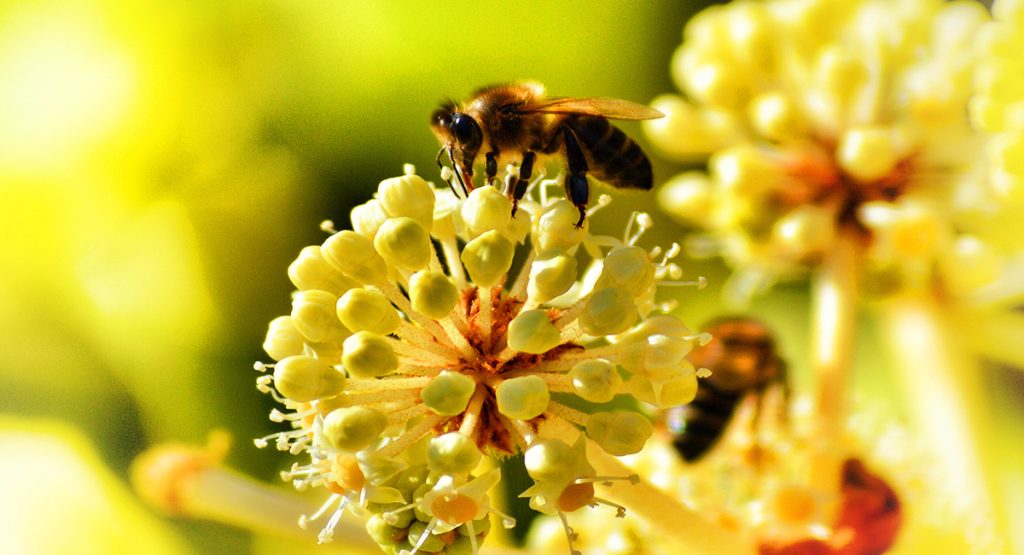
British bee
Why are bees declining?
Humans and climate change are having a massive impact on the survival of bees.
Human changes in land use and more intensified agricultural practices are destroying bees habitats and reducing the diversity of wild flowers which bees feed on. It is becoming more common that fields only contain one type of crop rather than a variety of wildflowers, which would have provided nectar for bees food.
In terms of climate change, increasing temperatures due to carbon dioxide emissions have caused population decline in all pollinators but especially in bees. Evidence suggests that populations of a variety of bee species have declined due to carbon emissions which are causing a rise in global temperatures and hence upsetting both their feeding and foraging seasons. Populations will be further threatened if warming continues.
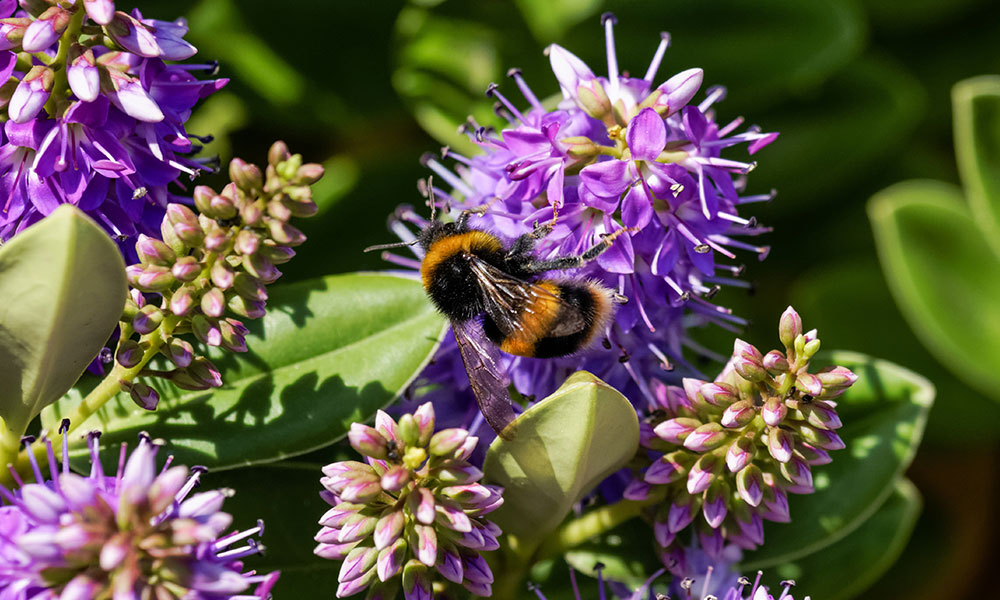
British bumblebee
Bumble Bees by Region
Look out for bees in your local area and find out what is putting them under threat.
East and South East of England – Sea Aster Mining Bee
- Look out for them from Spurn Point all the way to the very east of Dorset but East Anglia and Thames Estuary are particularly prominent locations of the Sea Aster Mining Bee.
- They are salt loving bees – found in salt marshes and coastal areas. However salt marshes have been declining by 50% so their habitats are under threat.
- This species is threatened from habitat loss due to coastal development. This means they are losing their homes due to tourist holiday developments.
What do they look like?
They have a fuzzy section of rich reddish brown hair and a black body with paler strands.
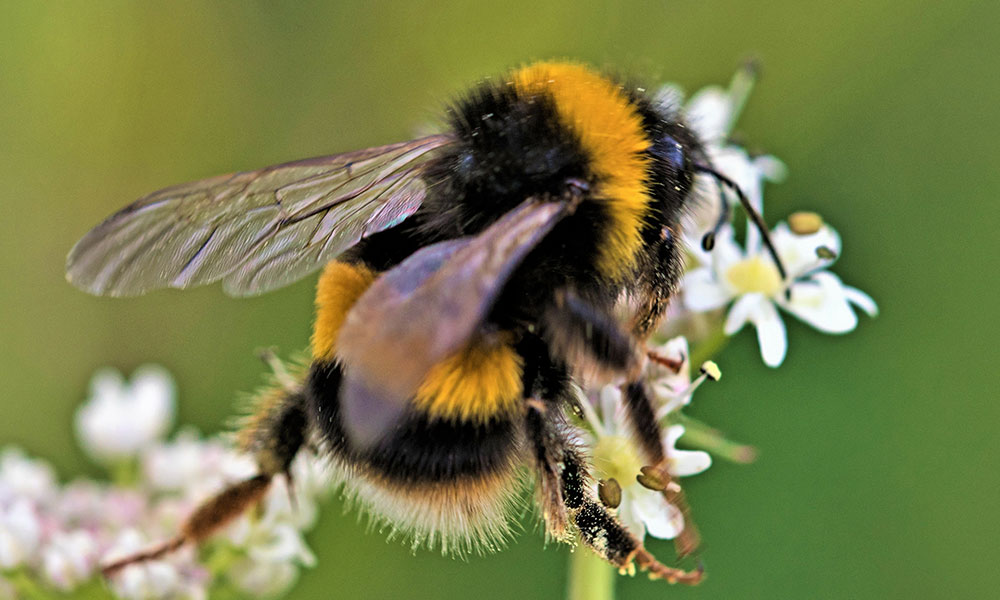
Garden Bumble Bee
East Midlands – Large Garden Bumble Bee
- Look out for them in the East Midlands, Cambridgeshire and The Fens.
- This bee is under threat due to agriculture and land use changes. Nesting sites for this bumble bee are essential as it needs lots of different places to rest while on its foraging season, however building on and altering previously wild land is rapidly reducing the number of nesting sites.
- An increase in mowing and grazing of farmland and gardens is bad news for these bees who forage on wild flowers and plants. Mowing before the end of the foraging season reduces food sources for the bees.
- The population of the large garden bumble bee has disappeared from 80% of it’s former range.
What do they look like?
The Large Garden Bumble bee has a very long face and is famous for its white tail. It tends to have a yellow band on its head which is a pale mustard colour.

Buff Tailed Bumble Bee
London – Buff Tailed Bumble Bee
- London is the key area for the Buff tailed bumble bee but they are also widespread around the South East.
- Buff tailed bumble bees have altered their behaviour to forage in the winter months – this is not normal.
- The Hibernation times of the Buff tailed queen bee are becoming shorter and some are not even going into hibernation at all.
- The queens are now producing an active winter colony and this is due to the recent warmer winters over the past few years.
- These bees are mostly threatened by climate change which is altering their foraging season.
- The lack of hibernation could be the cause of the spread of bee parasites among colonies.
What do they look like?
This bumble bee is on the larger side and has a dark yellow stripe at the front of its abdomen and a white tip at the end of its tail.
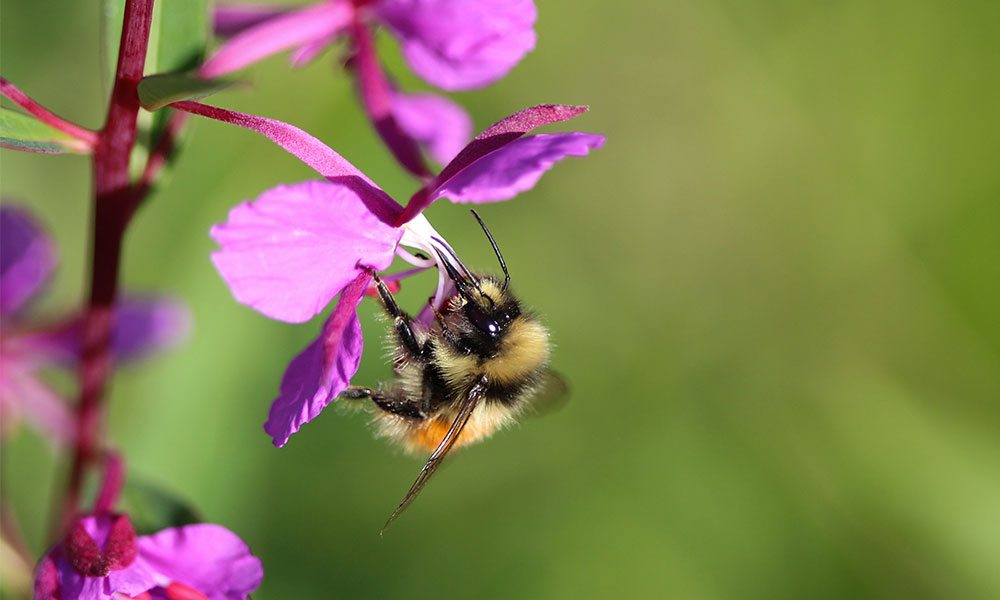
Billberry Bumble bee
North East – Billberry Bumble bee
- The Bilberry bumble bee is a specialist feeder bee, whose primary food source is bilberries, bell heather and birds foot trefoil legumes.
- The restriction in foliage availability due to a limited foraging seasons from climate change based weather variations is causing starvation among the Bilberry bumble bees.
- Shortages of food sources are detrimental to the Bilberry bumble bee which is a specialist feeder bee who already has a limited range of food sources.
- It is these specialist bees that have already experienced the most population decline and have the highest vulnerability to the effects of climate change. This is due to season creep causing a “temporal shift” in their food availability.
- These bees are very vulnerable to the effects of climate change.
What do they look like?
The Billberry bumble bee has a red tail with a little round face. They have yellow bands over their thorax and the males can be distinguished by their yellow hairy faces
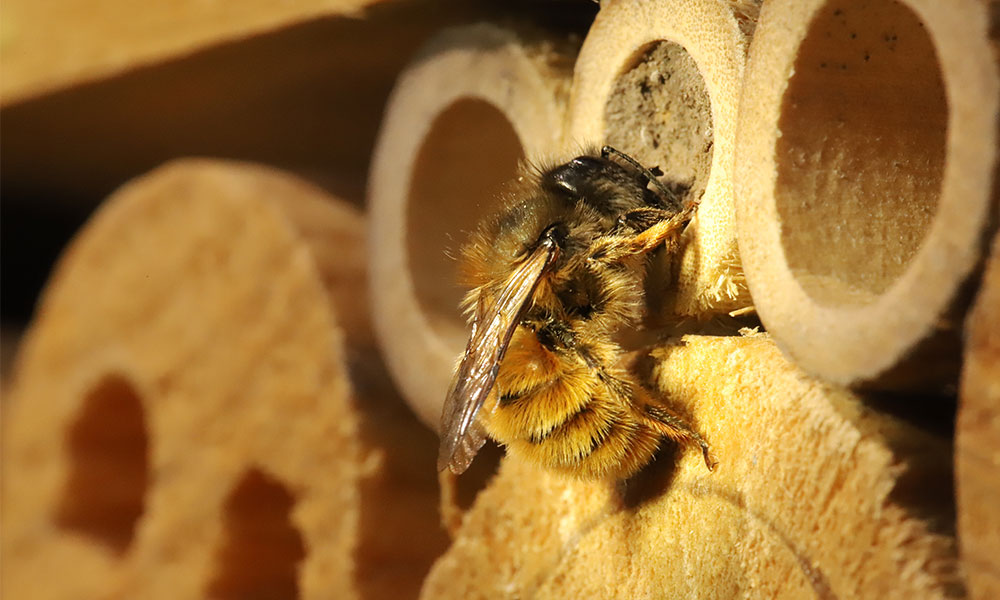
Mason Bee
North West – Wall Mason Bee
- This bee can only live in Scotland or Iceland due to a specific soil structure which supports a certain diversity of wild flowers, needed by the bees.
- It likes to live in semi-natural and un-improved grasslands eg: wastelands and old industrial sites which have been over grown.
- They like to shelter by dead wood or dry stone walls.
- The bees traditionally thrived in Scotland and the North West due to Crofting – a traditional small scale farming technique in which there are many different types of land management and no use of fertilisers and pesticides.
- The decline in crofting in Scotland is posing a threat to bees.
What do they look like?
This bee is mainly a mustard yellow/brown colour but has sections of black hairs that are located in between its wings. The wall mason bee is quite round in shape.
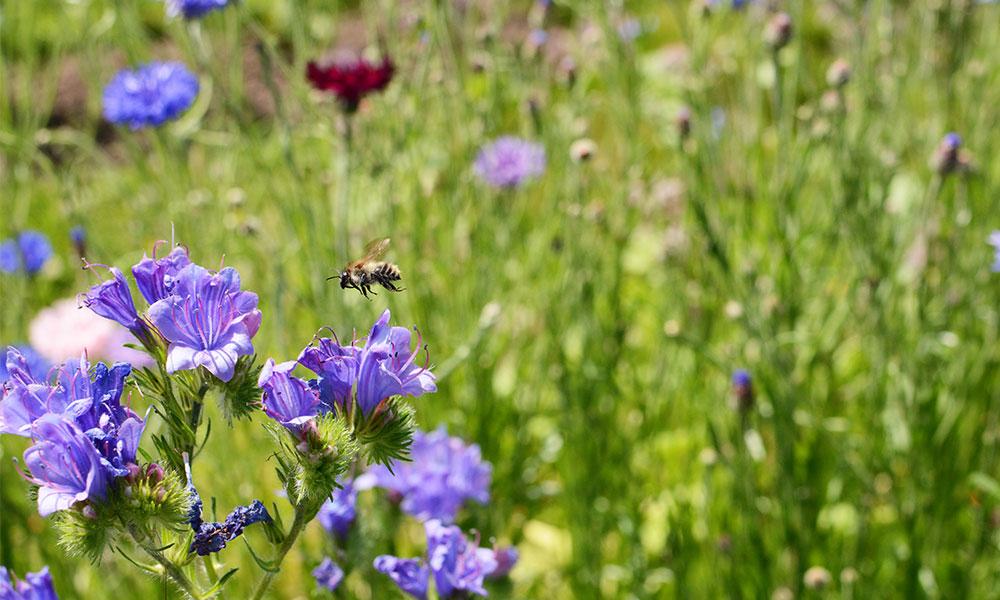
Shrill Carder bee
South – Common/Shrill Carder Bees
- The Common Carder Bee is the only bumblebee that is mostly brown/ginger, but lacks a white tail. They are most common type of Carder bees and can be found across the UK.
- The rarest type of Carder Bee is the Shrill Carder Bee. The Shrill Carder Bee suffered drastic decline, and is now confined to a few localities including large military ranges and unimproved pastures in the south of England and the Thames Gateway.
- The Shrill Carder Bee queen produce a loud, high-pitched buzz – this is the reason for it’s name ‘Shrill’.
- Shrill Carder Bees are much smaller than the Common Carder Bee and have a smaller colony size (50 bee as opposed to 60-100 bees).
- Shrill Carder Bees nest on the surface in dense vegetation, but they may also use old rodent burrows.
What do they look like?
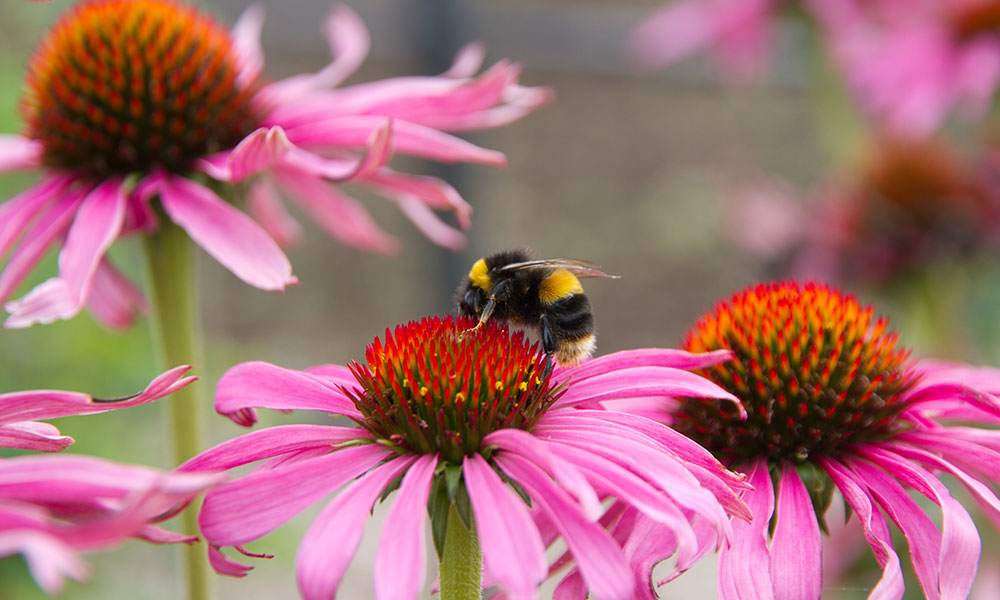
British bee
The Shrill Carder Bee is smaller and greyer than the other species of carder bee. It is grey-green in colour, and most have a single black band across the thorax and two dark bands on the abdomen. They have a pale orange tip to the abdomen which can appear rather dull because of surrounding white hairs.
The Common Carder Bee has ginger thorax and a paler ginger abdomen with black hairs visible between the bands. Colour is variable depending on location and individuals range from pale ginger to almost black.
What can you do to help bees?
- Incorporate helping bees into your skin care routine by checking out this Bee Good skincare page. A company which creates exceptional skincare using sustainably harvested excess honey and beeswax from their bees. Their packaging labels are made from Lokota paper containing various native wild flower seeds that you can plant in your garden to grow your very own wild flower meadow.
- You can plant bee friendly flowers in your garden as a food source for bees. Examples of bee friendly Flowers are: Asters, Sunflowers, Foxgloves, Larkspurs, Aquilegias, Hellebores, Delphiniums and Buddleias.
- Try and reduce your use of pesticides, weed killers and chemicals in your own garden. Pesticides applied to flowers will get into the nectar which the bees collect. These will hurt the bees and are a direct cause of colony collapse.
- Buy local, untreated honey – no chemicals means no bother for our little bee friends.
- Change your perception that bees will hurt you! Make bees our friends, not our enemies.
- Don’t over-weed your garden. What we class as weeds are a bee’s food heaven. A lot of weeds we remove are actually wild flowers which would provide plenty of nectar for bees. More bee-friendly gardening tips.
- Put a little bowl of water in your garden – this doesn’t seem like much but when bees are pollinating they get thirsty so this can really help.
- Learn how to build a bee hotel and give bees a place to rest during their foraging season.
For more information on identifying other types of British bees visit the British Beekeepers Association.





